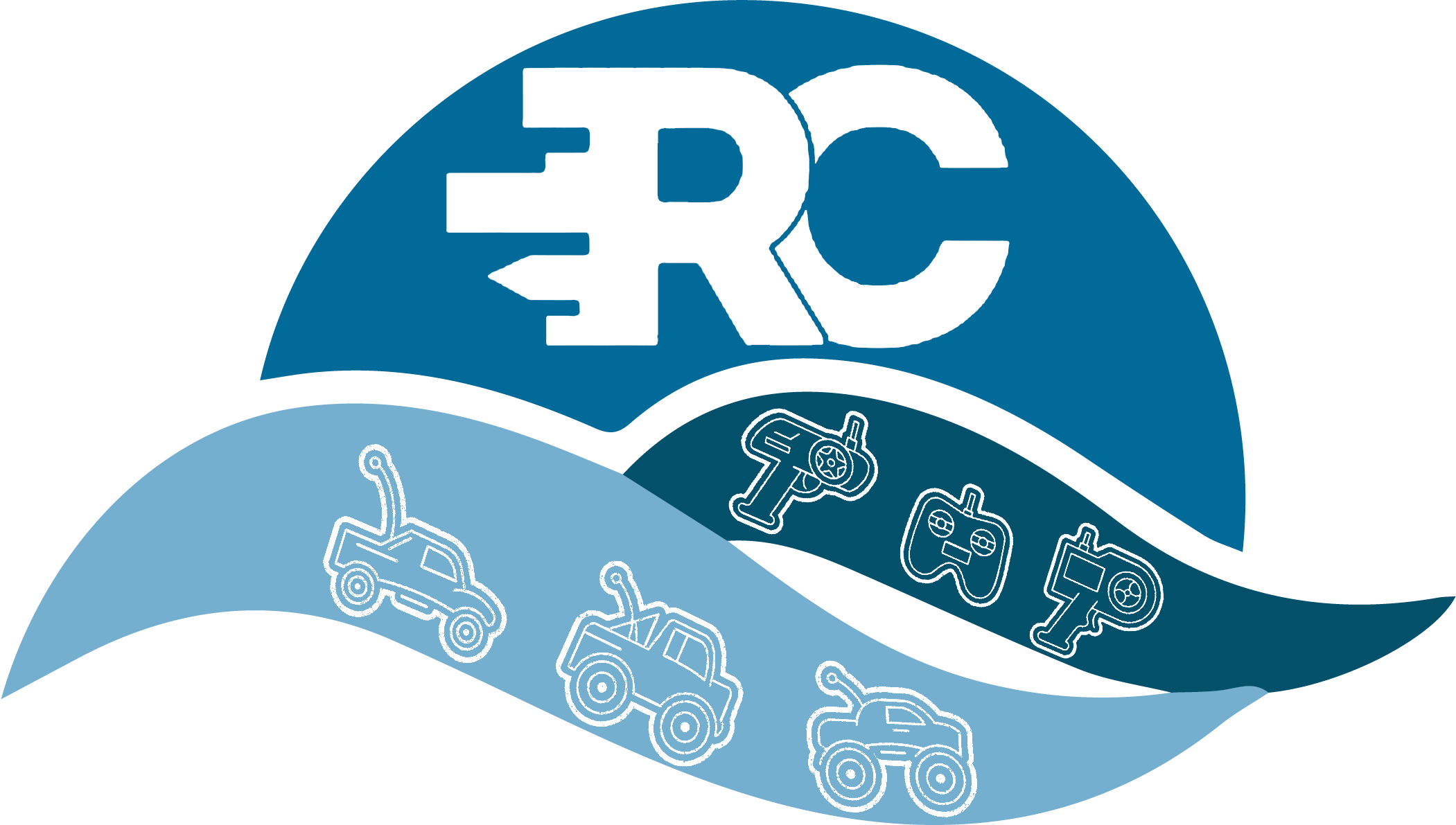Hello everyone! I am here with the last article about boats which will tell you about the evolution of RC boats. RC boats can be considered as a hobby or as a sport, which ever suits you best. Boats are a foam of entertainment to spend your time in a more fun way. It can be considered as a sport too. whichever suits you best. So, let’s get started and get some useful information.
Table of Contents
Introduction
Remote-controlled (RC) boats have come a long way since their inception, evolving from simple hobbyist models to sophisticated machines used in competitive sports. What started as a fun pastime for enthusiasts has grown into a full-fledged sport, complete with races, advanced technology, and a global community of passionate boaters.
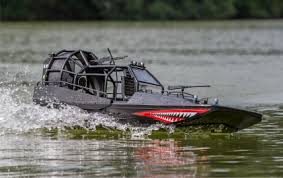
The evolution of RC boats reflects the advancements in engineering, electronics, and design, making them more powerful, agile, and durable than ever before. This article explores the history and transformation of RC boats, discusses how they transitioned from a hobby to a sport, and suggests some of the best models available for both casual and competitive users.
The Early Days of RC Boats: A Hobbyist’s Delight
The evolution of RC boats began in the mid-20th century, when remote control technology was first introduced to the world of model boating. Early RC boats were primarily built by hobbyists who had an interest in model engineering and boating. These boats were often powered by internal combustion engines or electric motors, and the radio transmitters used were bulky and rudimentary by today’s standards.
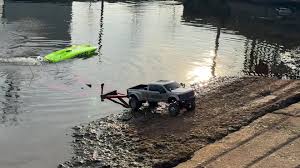
Back then, the focus was largely on the craftsmanship and the joy of building and piloting small boats across ponds or lakes. Hobbyists would spend hours meticulously constructing their boats, with wooden or fiberglass hulls and handcrafted parts. Controlling the boat from the shore using a simple radio transmitter was a marvel of engineering, offering a new way to enjoy the water.
The Shift to Electric Motors and Ready-to-Run (RTR) Models
As technology progressed, the 1980s and 1990s saw a shift from gas-powered engines to electric motors, making RC boats more accessible and easier to use. The development of brushless motors and LiPo (Lithium Polymer) batteries revolutionized the hobby, allowing boats to achieve higher speeds with less maintenance. These electric motors were quieter, more efficient, and easier to handle, making RC boats more attractive to beginners.

The introduction of Ready-to-Run (RTR) models also played a significant role in the evolution of RC boats. RTR boats came pre-assembled with all the necessary components included, making it easy for new users to jump into the hobby without the need for complex building or setup. This helped broaden the appeal of RC boats beyond the realm of experienced hobbyists to a wider audience.
The Rise of RC Boat Racing: From Hobby to Competitive Sport
As RC boats became more sophisticated and powerful, enthusiasts began organizing informal races, which eventually evolved into organized competitions. Racing RC boats added a new level of excitement to the hobby, as it tested both the skill of the pilot and the performance of the boat. These races often took place on controlled courses, with specific rules and regulations governing the competition.
By the late 1990s and early 2000s, evolution of RC boats racing had emerged as a recognized sport, with national and international competitions being held regularly. The International Model Power Boat Association (IMPBA) and the North American Model Boat Association (NAMBA) are two major organizations that oversee RC boat racing, setting standards and rules for competitive events.

RC boat racing features various categories, including offshore racing, hydroplane racing, and sprint racing. The boats used in these races range from high-speed electric models to gas-powered beasts capable of reaching speeds exceeding 100 mph.
Technological Advancements Fuel the Sport
The evolution of RC boats from hobby to sport has been fueled by technological advancements in several key areas:
1. Brushless Motors
The introduction of brushless motors significantly increased the speed and power of RC boats. These motors are more efficient than brushed motors, offering higher torque and better acceleration, making them ideal for racing applications. Additionally, brushless motors are more durable, requiring less maintenance, which is crucial for competitive racers.
2. LiPo Batteries
LiPo batteries evolution of RC boats industry by providing a higher energy density compared to older battery types like NiMH (Nickel-Metal Hydride) and NiCd (Nickel-Cadmium). LiPo batteries are lighter and more powerful, allowing boats to run at higher speeds for longer periods of time. They also provide faster charging times, which is beneficial for competitive racing.
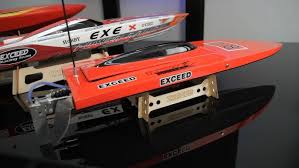
3. Water-Cooled Systems
As RC boats became faster and more powerful, heat dissipation became an important concern. Modern racing boats are equipped with water-cooled systems that help regulate the temperature of the motor and ESC (Electronic Speed Controller), ensuring optimal performance during long races. Water cooling prevents the motor from overheating and allows the boat to maintain its speed and agility for longer periods.
4. Advanced Radio Systems
Modern evolution of RC boats is equipped with sophisticated radio control systems that provide more precise control over the boat’s movements. Digital proportional (2.4GHz) systems have replaced older analog transmitters, offering better range, reduced interference, and smoother operation. This advancement has greatly enhanced the pilot’s ability to navigate their boats with precision, especially in competitive settings.
5. Hydrodynamic Hull Designs
Racing boats are now designed with hydrodynamic hulls that reduce drag and increase stability, allowing them to cut through the water at high speeds. The development of catamaran and hydroplane hulls has improved the performance of racing boats, making them faster and more agile. These hull designs are particularly beneficial in rough water conditions, as they help maintain control and reduce the risk of flipping.
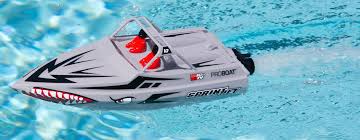
Popular RC Boat Racing Categories
As evolution of RC boats into a sport, various racing categories emerged, each with its own set of rules and boat types. Below are some of the most popular racing categories in the world of RC boating:
1. Hydroplane Racing
Hydroplane racing features sleek, high-speed boats that skim across the surface of the water. These boats are designed with a unique hull shape that lifts most of the boat above the water, reducing drag and allowing for higher speeds. Hydroplane races are typically held on oval or straight-line courses, and boats in this category can reach speeds exceeding 100 mph.
2. Offshore Racing
Offshore evolution of RC boats racing mimics real-life offshore powerboat racing, with courses that span larger bodies of water and include both straight and turning sections. Offshore boats are typically catamarans or deep-V hull designs that can handle choppy water conditions. These races emphasize endurance and the ability to maintain speed and control over long distances.
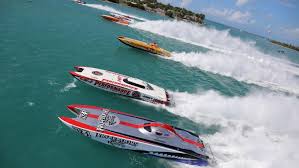
3. Sprint Racing
Sprint racing involves short, high-speed races on relatively calm water. The boats used in sprint racing are designed for quick bursts of speed and agility, with races often lasting only a few minutes. Sprint races are intense and require precise control, as boats must navigate tight turns at high speeds.
4. Endurance Racing
Endurance racing tests both the boat’s speed and its ability to run for extended periods without overheating or losing power. These races can last for several hours, and boats must be equipped with efficient cooling systems and long-lasting batteries or fuel. Endurance races are a true test of both machine and pilot, as they require strategy, skill, and consistent performance.
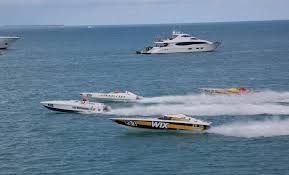
Recommended RC Boats for Hobbyists and Competitive Racers
Whether you’re a hobbyist looking to get started or a seasoned racer seeking high-speed thrills, there are plenty of evolution of RC boats available that cater to all skill levels. Below are some of the best models for different types of users:
1. Traxxas Spartan
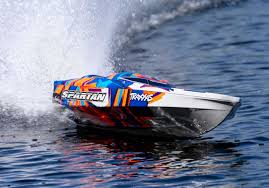
The Traxxas Spartan is one of the most popular high-performance evolution of RC boats on the market. It features a powerful Velineon 540XL brushless motor and can reach speeds of over 50 mph. The Spartan is equipped with a water-cooling system to prevent overheating and has a durable, hydrodynamic hull designed for speed and stability. With a 2.4GHz radio system, it offers precise control, making it a great choice for competitive racing.
- Best For: High-speed racing, advanced users.
- Top Features: Brushless motor, water-cooled system, speeds over 50 mph.
2. Pro Boat Blackjack 24

The Pro Boat Blackjack 24 is a catamaran-style boat that’s perfect for both hobbyists and intermediate racers. It comes with a brushless motor, a water-cooled ESC, and a 2.4GHz radio system for smooth, responsive control. This boat is capable of reaching speeds of 30 mph and offers excellent stability, even in rough water conditions. This boat is the perfect example of Evolution of RC boats.
- Best For: Intermediate racers, catamaran enthusiasts.
- Top Features: Brushless motor, water-cooled ESC, catamaran hull design.
3. Ssccgym Remote Control Boat

Evolution of RC boats. For those looking for a smaller, yet powerful boat, the Ssccgym Remote Control Boat is a great option. It’s designed for high-speed racing and comes equipped with a brushless motor and LiPo battery. The Barbwire 2 can reach speeds of up to 30 mph and features a self-righting hull, which is ideal for beginners who may flip their boat during sharp turns.
- Best For: Beginners, high-speed hobbyists.
- Top Features: Brushless motor, self-righting hull, compact design.
4. Pro Boat Heatwave Recoil

The Pro Boat Heatwave Recoil is an excellent choice for those new to the hobby. It features a brushed 550 motor, making it easy to operate while still providing a decent speed of around 15 mph. This boat is designed for stability and ease of use, making it a good starting point for anyone looking to get into RC boating.
- Best For: Beginners, calm water operation.
- Top Features: Easy-to-use brushed motor, stable deep-V hull.
5. RC Turbo Jet Boat

For competitive racers looking for a hydroplane, the RC Turbo Jet Boat offers top-tier performance. This boat is designed for extreme speed and agility, with a lightweight hull and a brushless motor capable of propelling it to over 60 mph. It’s designed specifically for racing and requires experience to handle.
- Best For: Advanced racers, hydroplane racing.
- Top Features: Extreme speed, lightweight hydroplane design.
The Future of RC Boats: A Sport on the Rise
The evolution of RC boats from a simple hobby to a competitive sport reflects the growing interest and innovation within the community. As technology continues to advance, we can expect to see even faster, more powerful boats, as well as new racing formats and competitions. The inclusion of FPV (First Person View) technology is already being experimented with in RC boat racing, allowing pilots to experience the race from the boat’s perspective through a live video feed.

Moreover, advancements in materials like carbon fiber and composite hulls will continue to improve the durability and performance of racing boats. With increasing accessibility through RTR models and advanced kits for experienced users, RC boating is set to grow even further, attracting new enthusiasts and racers alike.
Conclusion
RC boating has evolved significantly over the past few decades, transitioning from a niche hobby to an exciting and competitive sport. With advancements in motors, batteries, and hull design, RC boats are faster, more durable, and more fun than ever before. This is the evolution of RC boats. Whether you’re a casual hobbyist looking to enjoy a day at the lake or a competitive racer pushing the limits of speed, the world of RC boating has something for everyone.
With the right model and a passion for the water, you can dive into this exciting hobby and, who knows, maybe even become the next RC boating champion. For more information check my website.
